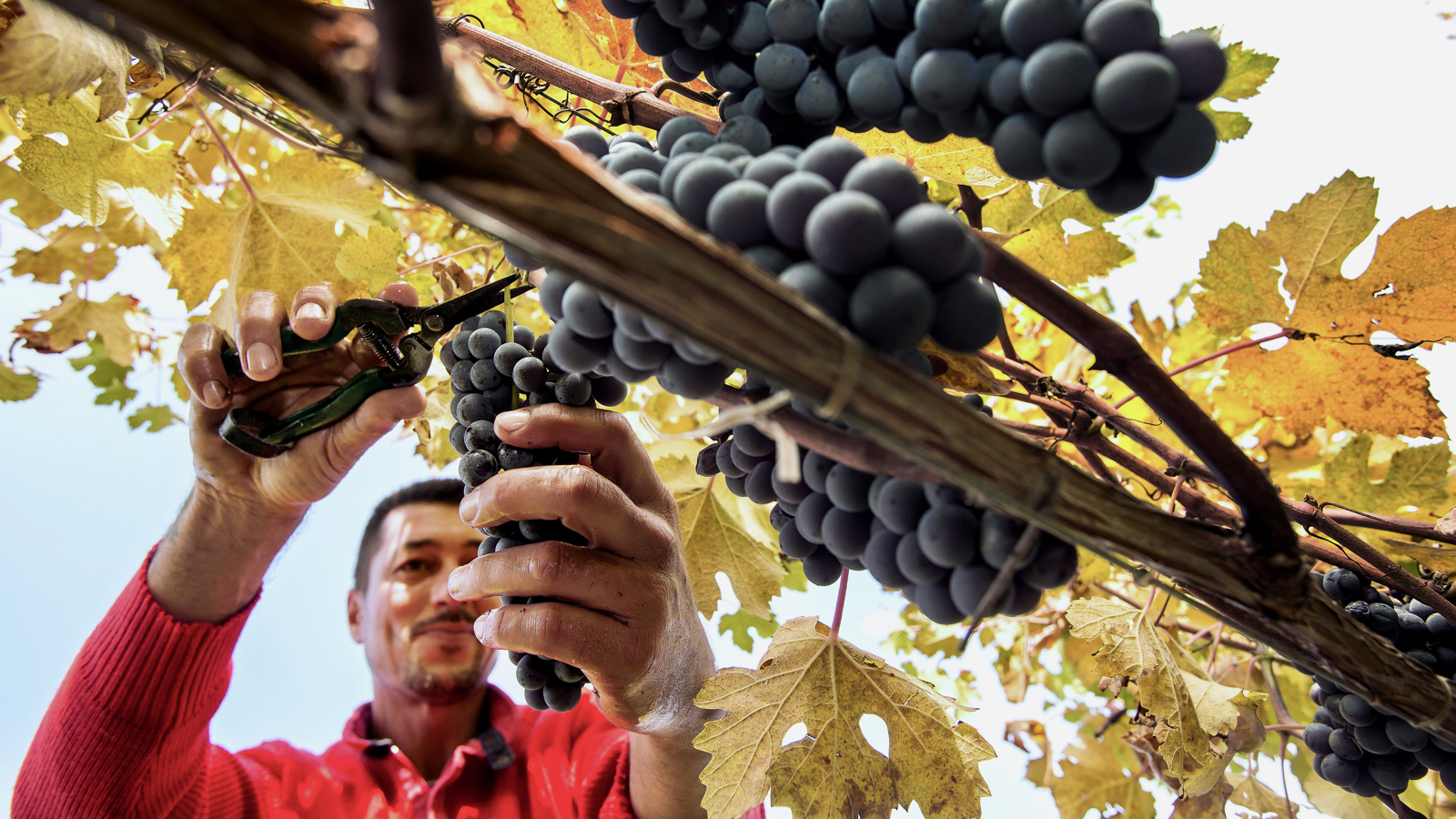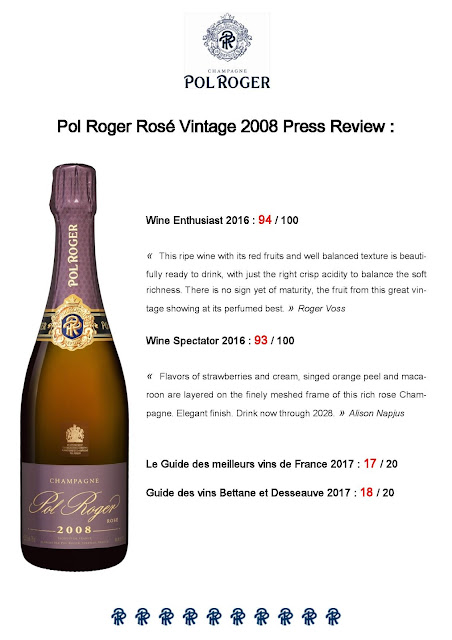Jefford on Monday: The taste
of Cava
Andrew Jefford
considers the role of indigenous grape varieties in Cava and other sparkling
wines.
Recaredo's
Xarel-lo grapes. Credit: Andrew Jefford
The taste of Cava is
important. It matters, indeed, even to those who never drink sparkling
wine. If this sounds bizarre, bear with me.
Champagne – no
surprise here — is the dominant force in sparkling wine. More than that:
it’s one of humanity’s happiest achievements, like the invention of the piano
or the bicycle. Take a flock of low chalky hills in the dour,
agri-industrial landscape of northern France, plant three members of the Pinot
family, harvest them just before winter slams the door on summer, then
manipulate the results with cunning craftsmanship. The result is the most
famous wine in the world, and a symbol and metaphor for celebratory ease and
sensual finesse.
Within the wine
world, Champagne’s dominance of its category means that there is an
almost-unquestioned assumption that all sparkling wine should be made in that
way, and from those varieties. It’s wise to assume the former. The
latter, I’d suggest, is often an error.
Chardonnay and
the two Pinots make impeccable sparkling wine in the Champagne region, where
they can snail towards ripeness over a cool, fretful summer. In sugar
terms, they don’t fully ripen– but the Champagne method, and a little
chaptalisation if necessary, compensates for that. Phenolically, by
contrast, the long season gives these varieties a perfumed, vinous, nuanced and
teased ripeness which makes Champagne sing. (Climate change gives the
nearby UK a plausible stab at pulling off the same trick.)
Once you start
to shift the varieties towards lower latitudes, by contrast, those varieties
begin to lose their interest. No grape variety, remember, is universally
great. They are only great in a certain place on earth, with all that
that means in terms of soil, topography and climate. Champagne’s hegemony
has been wonderful for Champagne, but it may have held other sparkling wine
producers around the world in check.
It’s true that
in very cool places (Tasmania comes to mind), Chardonnay and the Pinots may
indeed be the best choice pending the revelation of better options, for which
experiment is needed. In warmer locations, though, Chardonnay and the
Pinots are often a poor choice. In order to give a sparkling wine
something resembling ‘a Champagne balance’, the varieties have to be picked
inarticulately early, long before they have achieved any kind of phenolic
maturity; and in such locations, when phenolic maturity eventually comes, it
will be much less subtly constituted than in Champagne anyway. An
alternative (and often a complement) is for producers to adjust acidity,
thereby making an industrial product whose fine-wine interest drops swiftly
away.
‘The best Cava is a fine
sparkling wine of genuinely indigenous style’
Take a look at
the varietal nuancing which unfolds during a sparkling journey south from
Champagne towards Cava. We clip through the Loire valley, where the
climate and soils are still close enough to those of Champagne for
Chardonnay-Pinot sparklers to work well, even if Chenin Blanc creates more
interesting and regionally characterful sparkling wines. Chardonnay and
Pinot Noir can make Crémant de Bourgogne a plausible Champagne substitute
(remember Chablis’s close proximity to the Champagne’s Aube region), though
Chardonnay begins to assert its still-wine varietal character once you are
south of the Yonne, and especially so if the raw materials come from southern
Burgundy or Beaujolais. (I plan to take a close look at Crémant de
Bourgogne in 2017.)
By the time we
reach Limoux in the cool upper Aude valley, the rules regarding grape varieties
for sparkling wine are in sensible modulation, reflecting latitude. Yes,
you can use Chardonnay and Pinot Noir, but there is little chance down here of
phenolic ripeness outrunning sugar ripeness and delivering a full-season
Chardonnay or Pinot grape with a potential alcohol of just 9.5% or 10%.
Most Crémant de Limoux is in fact principally a blend of Chardonnay and Chenin,
while the more interesting Blanquette de Limoux is based on the perfectly
site-adapted local variety Mauzac. The result is a set of often refined
sparkling wines which do not unsuccessfully ape Champagne, but reflect their
surroundings.
Press on over
the Pyrenees and down the Mediterranean coast to Catalunya, and for the first
and only time in the wine world you will come across a major sparkling wine
region using the ‘traditional method’ whose very greatest wines do not include
Chardonnay or either of the red Pinots, but are crafted from the indigenous
varieties Macabeo, Xarel-lo and Parellada. (Prosecco, too, is based on
its own indigenous variety Glera — but most is made by the Charmat method,
known in Italy as Metodo Martinotti.)
Limestone
pebbles typical of the Cava region. Credit: Gramona
The result, in
the case of the best Cava, is a fine sparkling wine of genuinely indigenous
style. One which, in other words, not only has Mediterranean scents and
flavours, but whose balance is necessarily and appropriately different to that
of Champagne.
The taste of
Cava matters, then, not only because the finest examples are beautiful in their
own right (see the tasting notes below), but because it could and should serve
as a model for sparkling wine produced in lower latitudes and warmer
locations. Take away the bubbles, and it illustrates one of the
fundamental truths of terroir: the necessity to be honest about exactly which
varieties are well adapted to a site, and the duty to work with those if you
want to make wine which can give fullest voice to the potential of a place.
Of course you
can make a counter-argument based on the commercial desirability of sparkling
wines based on the Champagne formula. Moreover because technique and
craft plays a larger role in the creation of sparkling wine than of still wine,
skilled practitioners can do “a decent job” with Chardonnay and Pinot Noir
almost anywhere, not least in Catalunya itself. The result, though, will
always be some sort of a compromise — and at the highest levels, that’s not
enough.
Describing Cava
Fine Cava is
customarily un-dosed (though one of the four Cavas below has 6 g/l) and is
intrinsically well-balanced in that state. The acid profile is gentler
than for Champagne, though the indigenous varieties are still picked relatively
early; its factors of balance are texture and aroma rather than acidity
alone. The spectrum of aromas and flavours is unique, Mediterranean in
inspiration and allusion, and quite different from those of Champagne.




















































